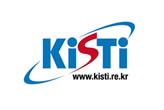

 |
The Fourth International Conference on Advanced Communications and Computation INFOCOMP 2014 July 20 - 24, 2014 - Paris, France |
|
|||||||||||||||||||||||||||||||||
| Details: |
ISSN: 2308-3484 |
|
||||||||||||||||||
All tracks/topics are open to both research and industry contributions.
Tracks:
Large scale and fast computation
Developments in information and computing systems; Grid computing; Cloud computing; Pervasive / ubiquitous computing; Services computing and Opportunistic computing; High Performance Computing (HPC); Fast data processing; Real-time processing; Fast switching and routing protocols; Parallelization of algorithms and applications; Energy-efficient High Performance Computing; Large scale data visualization; Tools for parallelization; Highly performance codes; Optimization; Innovative architectures; Distributed systems, dynamical systems; Future architectures, integrated systems, beyond cloud, reaching exaflop; Supercomputing architectures, operation, and management; Petascale, Exascale; Big data, dCache; HPC centers, data centers; Benchmarking; Green500, Graph500, Top500; Service provisioning; Green computing, cooling techniques
Programming models
Programming languages and parallel algorithms; Message Passing Interface (MPI), OpenMP; Massively Parallel Processing, Symmetric Multi-Processing; PGAS, GASPI, CAF (Co-array Fortran), UPC (Unified Parallel C); X10, Chapel, CUDA, OpenCL, OpenACC, OpenHMPP, Lime, OmpSs, OpenStream; Parallel Virtual Machine (PVM); Programming paradigms; Manycore, multicore; CPU, GPU, FPGA, accelerators; Chip design, architectures, and programming; Fault tolerance, troubleshooting, debugging; High end issues, latency, concurrency
Networks/systems communications
Cross-layer design and optimization; Cyber-physical systems and networks; Data centers, virtualization, and cloud networks; Delay/disruption tolerant networks; Future Internet broadband services; Software Defined Networks (SDN); Fast networks / InfiniBand architectures for future interactive multicore applications; Sensor networks and embedded systems; Ad hoc mobile networks; Access technologies; P2P networks; Optical networks; Cellular and broadband wireless networks; Mobility models and mobile networks; Multicast, broadcast and anycast; Multimedia protocols and networking; Software defined radio and cognitive radio networking; Content-based network service; Certification, public key infrastructures, data integrity; Privacy and anonymity
Networks/systems measurement, control and management
Networks/systems measurement, simulation and emulation; Network-, system-, and application-management; Congestion control and capacity planning; Dynamic spectrum management; Addressing and location management; Quality of Service (QoS) and Quality of Experience (QoE); Quality of Data (QoD) and Quality of Context (QoC); e-Commerce, accounting, pricing and billing; Highly parallel file systems, Lustre, GPFS; Interconnects, high speed ethernet; Use of distributed compute and storage resources; Energy-aware mechanisms for control and management; Configuration, reuse of software components; Resource allocation and management; Denial of service mitigation and prevention; System and data security; Communication visualization
Advanced applications
Scientific, theoretical, methodological, practical, and technical contributions; Advanced scientific computing; Simulation and modelling (scientific applications, engineering, industry); Mathematical and numerical algorithms and methods; Computer science and geoinformatics; e-Energy, geosciences, prospection, exploration, oil and gas; Mobility and logistic services; Geoscientific Information Systems (GIS); Remote sensing and satellite imaging; Cartography, hydrology; Climatology and environmental sciences; Molecular dynamics simulation; Genetic algorithms; Physics and chemistry applications; Medicine, genetics, epidemiology, medical geology; Multi-dimensional data visualization; Search engines and scientific discovery; Online social networking; Vehicular, underground and underwater networks and applications; Scientific data processing; Computation frameworks and tools; Mathematica, SAGE, Maple, Matlab, Scilab, Gromacs, ANSYS, Fluent, etc.); Database applications and development; Information and database systems; Education, e-Learning, and e-Science; ICT business evaluation and management; Legal informatics, Open Access, Science / Copyright, Patents; Earth and planetary sciences; Archaeology, cultural heritage; Knowledge discovery, documentation, and classification; Data intensive computing, data science; Methdodology and case studies regarding computing and communication scenarios; Small and Medium Enterprises (SME) applications; Computer Aided Engineering (CAE) applications
Evaluation context
Energy-aware and energy-efficient networks; Implementation and experimental testbeds; Traffic measurement and traffic patterns; Characterization of topology dynamics; Access and biometric technologies, performance, and cost prediction; Web services and performance; Performance measurement and benchmarking; Energy-aware and energy-efficient High Performance Computing; Usability studies; Social and ethic consequences with biometry and data security; Standards, benchmarks, protocols
Biometry, security, access technologies, algorithms, and applications
Technologies and advances in biometric algorithms and interfaces (gait, electrocardiography, iris, image, fingerprint, palm veins, multi-modality); Biometric systems; Integration of biometrics with other technologies; Challenge response; Simplified enrollment; NFC support, spoofing, and countermeasures; Single sign on (SSO); Adaptive trust; Template protection (protection of reference data); Large and scalable biometric systems using cloud services; Deployed solutions and applications; Experience reports and systems; Description in physical and logical access control; information system access, immigration and border control, law enforcement, entertainment, finance, life science, healthcare, forensics); Distributed and mobile devices; Public Key Infrastructures; Digital Forensics

















